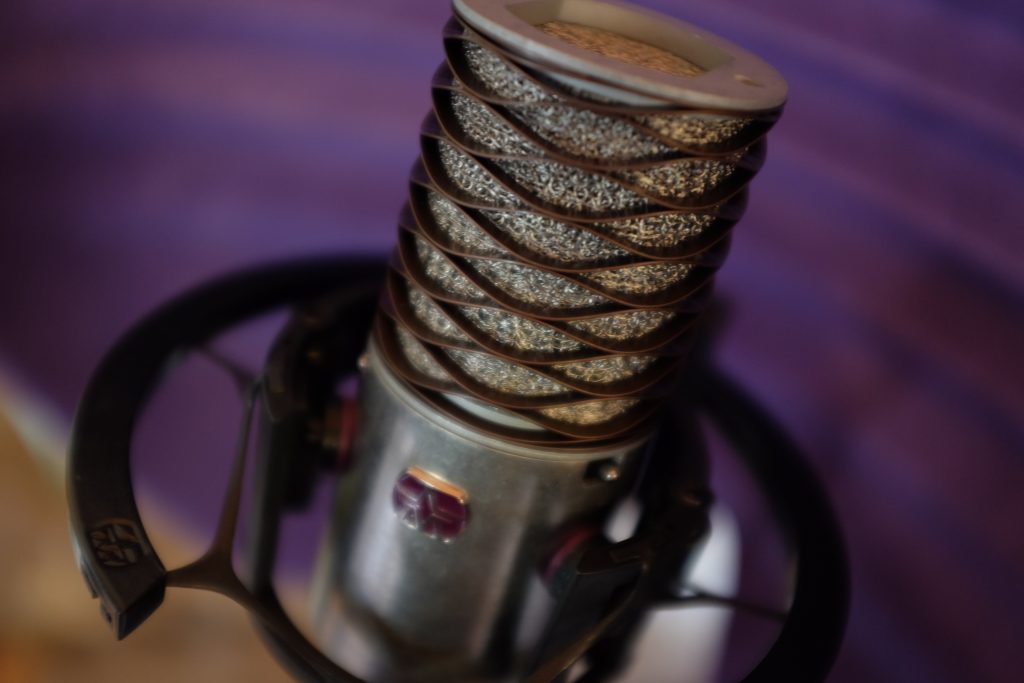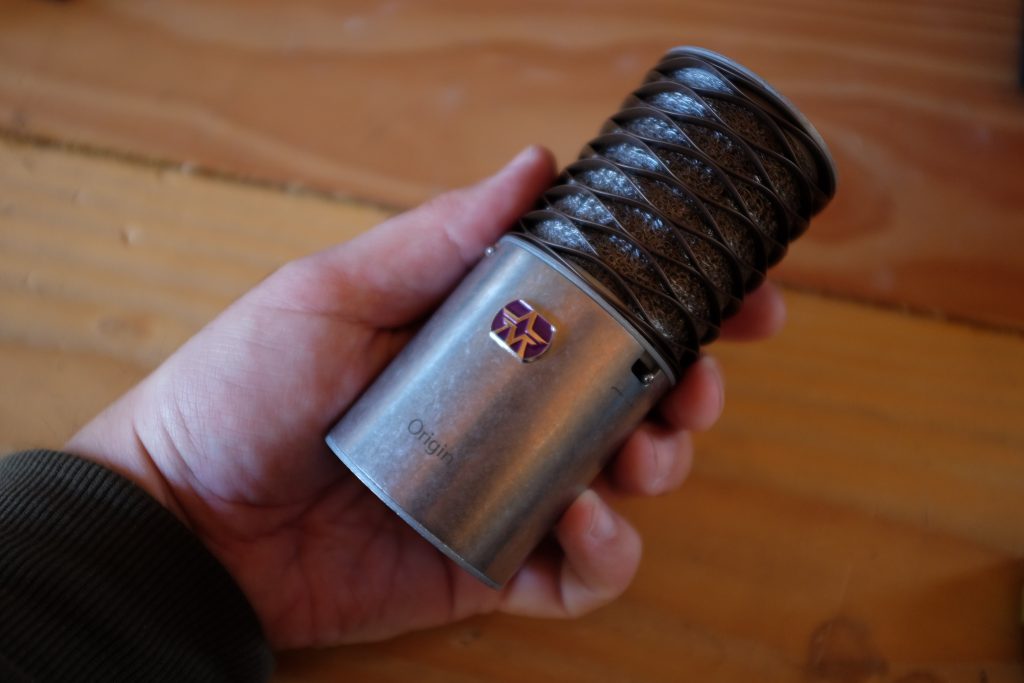
Hi all,
I’ve been asked a few time recently about what mics I use, so thought I would share a few words on my favourite; the Origin, from British manufacturers Aston.
Eye of the beholder
The Origin is a small but solidly built mic, with a tumbled steel body made from 2mm steel, which has both a direct stand mount (ships with a euro adapter) that sits next to the xlr port. On one side of the body is the -10db pad switch, with a 80hz low cut filter switch on the opposite side. The Aston logo faces forward along the ‘live’ side of this side address mic.
Moving up from the main housing is a mesh unlike any other I’ve used. It has a diamond pattern that is both attractive and functional. If dropped it offers protection to the internals but can also be reshaped back to normal by simply rolling on a flat hard surface. Pretty neat! Under this is what looks like steel wool and does a good job of removing pop, although I found best results were had with Aston’s additional pop shield that comes with their Suspension mount. Inside this is a cardioid patterned condenser which is itself built into a really quite effective suspension unit, that does well reducing everything but rumble from heavy footsteps to kick drums and other low frequency impacts. For casual use or in a quiet stable environment it’s fine but I really recommend a suspension system of some sort. I really like the Aston quick release one which you can get bundled with the mic.
Another worthy point to make here is that Aston use recycled (and recyclable) packaging where possible. This may not be important to you but is increasingly working it’s way up my priority list.
Ears of the beholder?
I think it must be very clear by now that I like the Origin as an object but do I actually find it useful as a tool in the studio. Well, the answer is a resounding yes. There really ins’t too much to say about it. It produces clear articulate reproductions of whatever it captures. If I had to define it’s strengths I would say it excels at acoustic instrument and vocal performances, even quiet intimate ones, where the low signal to noise ration is evident. Speaking of noise, there is a little when you record the most intimate and delicate performances but it’s organic and soft noise, not the spiky white hiss you might expect, which makes it much more palatable.
I’ve written a review of this for Future Music magazine and something I mentioned there was the lack of colour this mic brings to the equation. I think that sounded like a bad thing but nothing could be further from the truth. What I like about this mic is that it doesn’t impose itself on your recordings. Yes, a bit of analogue warmth is nice, in its place but I don’t think the mic is the place for that. If you want it, then use a good valve pre or compressor. Let the mic concentrate on detail and articulation.
The biggest weakness was when recording loud guitars and bass, where it falls slightly short, although it would do in a pinch, if you use a preamp that can counter some of the low end wooliness. It really isn’t that bad and to be honest I wouldn’t tsk many cardioid condenser mics with that job.
Vocals are where this really shiines. I don’t do as much in this area as other users but when I do I turn to the Origin over options far more costly. In fact it’s made it’s way into a lot of the sound design work I do, with a pair of Origins working to record in stereo for some AAA game sound design I’ve just completed. I would absolutley use the pair for capturing piano in this way too.

To sum up the Origin is a fantastic mic. At around the £200 mark, depending where you shop you cannot do better for this type of mic. You would have to spend a lot more to get a noticeable improvement on sound quality. That alone is worth the 9/10 oysters (an arbitrary score system I just came up with but it will stick) but take into account the excellent build quality, ethical packaging and the details like built in shielding and suspension (even if they aren’t perfect) and you know this is a winner. I truly believe that one of these will perform equally as well, if not better, than mics costing five times as much.
The bad and the ugly
You can’t stick it on a standard mic clip. That really is about it for cons. Ok, it doesn’t quite cope with loud amps but that’s ok. We have tools that are better suited to that. There is a little noise present in some circumstances but it’s kind of nice noise, so less of a problem.
But, if you want a great mic for capturing wonderful vocals, detailed cello, or brass then this really is right up there with the best available.
